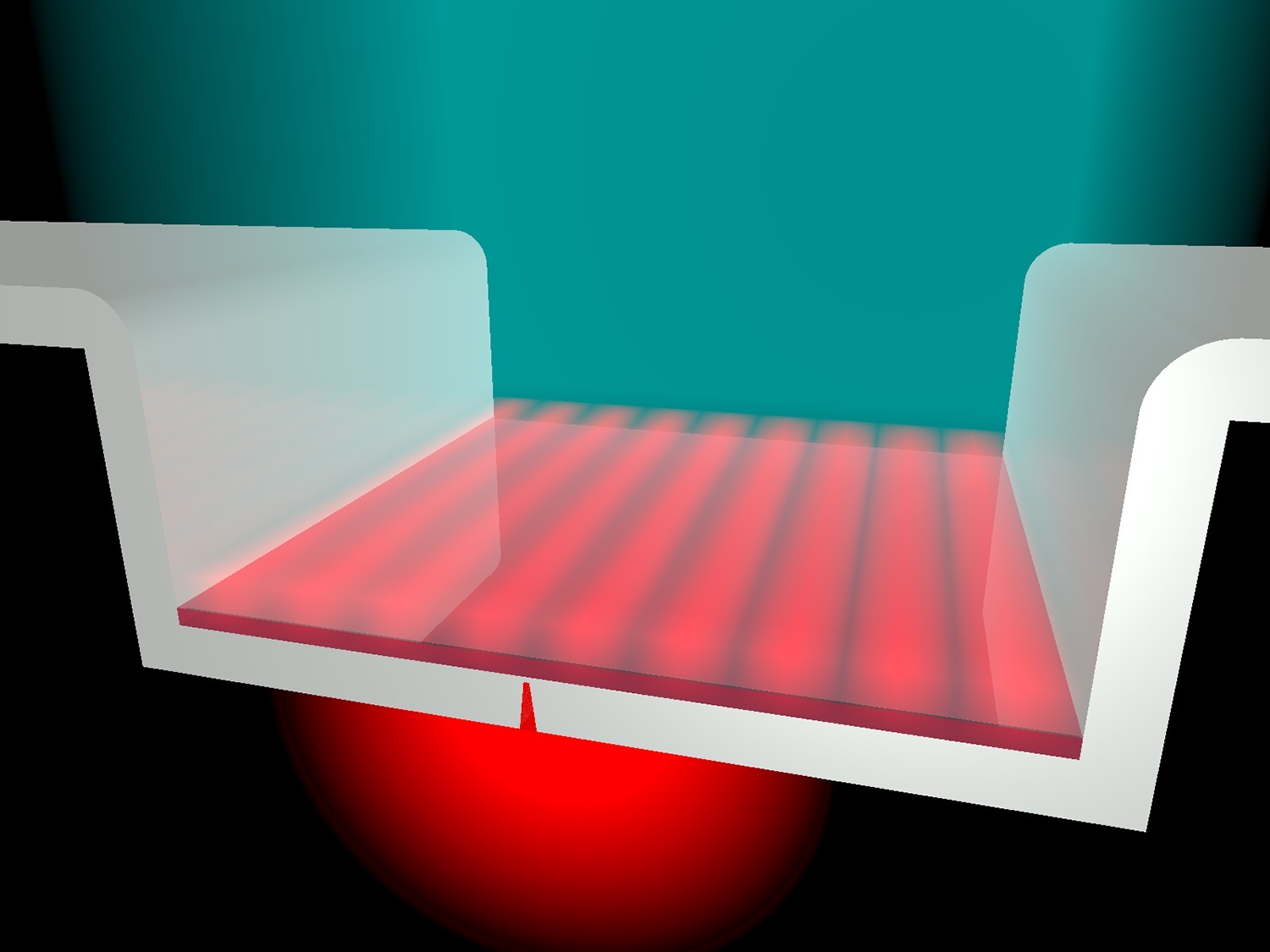October 12, 2017
Scientists at the National Institute of Standards and Technology (NIST) have developed the first miniature laser in which the light is guided along the floor of an open metallic trench. The laser could act as a nanoscale device to sense minute amounts of pollutants and other chemicals in the environment, or detect the surface binding of biomolecules for medical diagnostics.
Wenqi Zhu of NIST and the University of Maryland, along with NIST physicists Henri Lezec and Amit Agrawal, described their work in a recent edition of Science Advances. The work was performed in collaboration with Nanjing University in China and the University of Michigan.
The development of the new laser relies on the interaction between photons—particles of light—and the sea of electrons that floats along the surface of a metal. Interactions between the photons and ripples in the electron sea yield a special type of light wave, dubbed a surface plasmon polariton (SPP), which is tightly confined to travel only along the metal’s surface. This confinement makes the SPPs highly sensitive to anything lying on the metal surface.
As a first step toward building the miniature laser, the team fashioned out of silver a small trench-shaped open cavity in which SPPs can resonate. The cavity is a flat surface flanked by tiny, mirror-like sidewalls that reflect the surface waves back and forth.
Through careful fabrication, the resonant cavity possessed two key properties: all of its interior surfaces were smooth on an atomic scale, varying in thickness by no more than a few nanometers, and its sidewalls were perpendicular with respect to the flat cavity floor. The design, made possible by molding silver using a precisely patterned silicon template, enabled the SPPs to bounce back and forth across the cavity hundreds of times without losing significant energy, like a guitar string sustaining a pure note for a long time. That property, known as high quality factor, or high Q, is essential for constructing a laser. The Q measured by the team is the highest to date for any visible-light resonator using only SPPs.
The high Q also enabled the cavity to act as an extremely selective filter for SPPs—only those with wavelengths that fell within a narrow band could resonate in the cavity. The narrow range is important because it enables the resonant cavity (even before it became part of a laser) to become a highly sensitive detector of tiny changes in its environment—the presence of particulate matter or the addition of a thin film to the cavity’s floor. Such changes shift the center of the band of wavelengths that will resonate in the cavity.
“By achieving a narrow resonance, the shift in wavelength is clear, and the open cavity can act as an exquisitely sensitive detector,” said Lezec.
After demonstrating that the cavity could be used as a sensor, the team then worked to turn their design into a laser. They did so by adding an ultrathin coating to the cavity that amplified the intensity of the SPP traveling through the structure. This is the first nanoscale laser ever constructed by manipulating an SPP traveling on a single flat metal surface, Lezec noted.
Simulations suggest the SPP laser could become an even more sensitive detector for biological, chemical and environmental materials than using just the resonant cavity. The design of the laser also enables it to be easily integrated into a photonic circuit and may also enable new studies of quantum plasmonics, the nanoscale interaction of matter with the quantum properties of light.
The research was conducted at NIST’s Center for Nanoscale Science and Technology, the agency’s shared-use facility for nanotechnology. Several members of the collaboration are also affiliated with the Maryland NanoCenter at the University of Maryland.
Paper: Wenqi Zhu, Ting Xu, Haozhu Wang, Cheng Zhang, Parag B. Deotare, Amit Agrawal and Henri J. Lezec. Surface-Plasmon-Polariton Laser based on a Metallic Trench Fabry-Perot Resonator. Science Advances. Published online 6 October 2017. DOI: 10.1126/sciadv.1700909.














